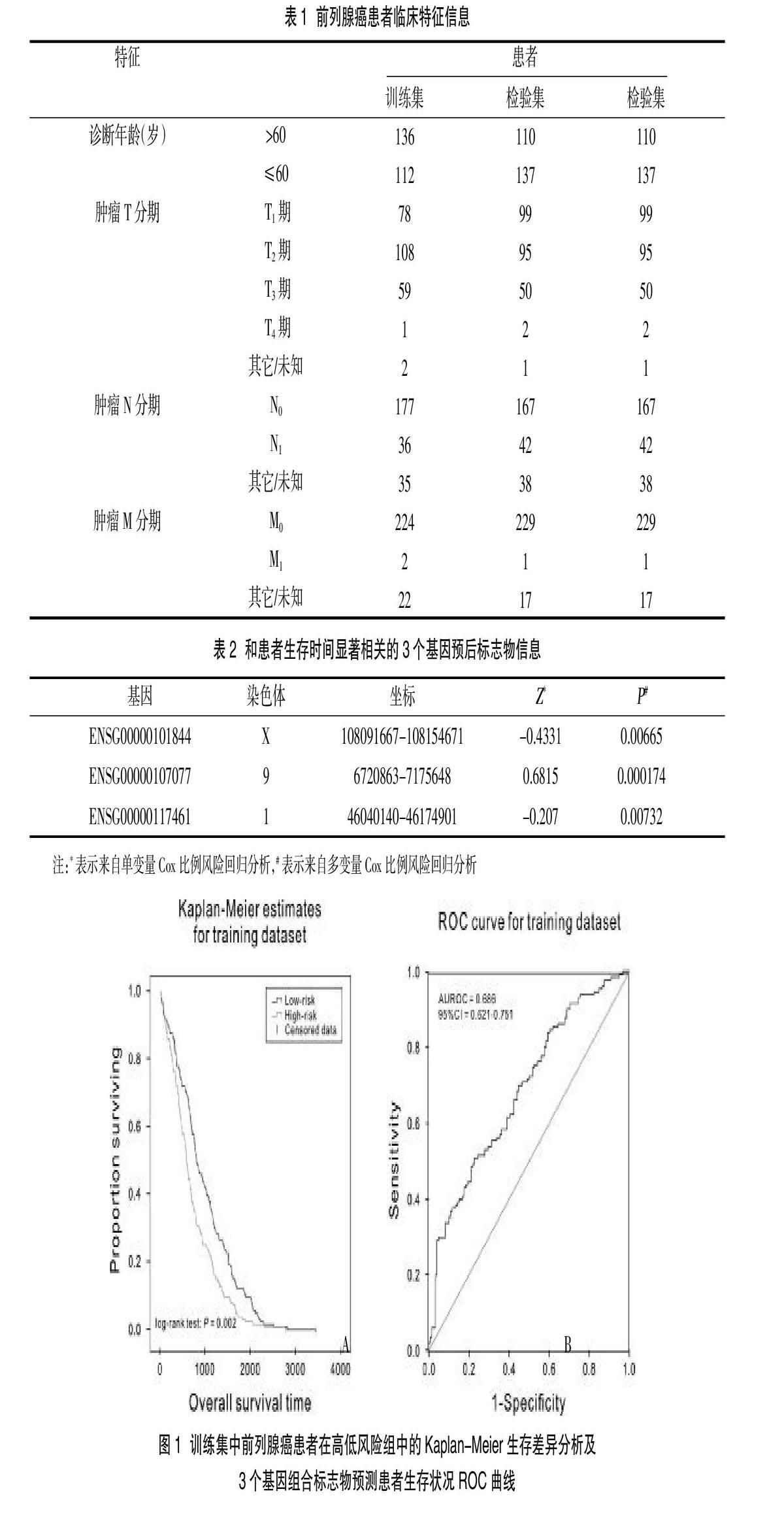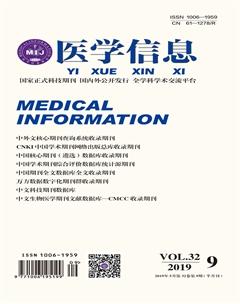前列腺癌预后标志的研究
张莹 谢静


摘要:目的 探索可以准确预测患者生存状态的基因标志物模型,提高前列腺癌的治疗成功率。方法 利用前列腺癌患者的基因表达谱数据和样本临床数据,筛选出与患者生存时间显著相关的基因作为特征来构建预后模型,并对模型预测的准确性进行验证。结果 构建了共包含ENSG00000101844,ENSG00000107077及ENSG00000117461 3个分子标记物为组合的预后标志物模型,该预后标志物模型表现出较好的预测性能,可有效提高前列腺癌预后评估的准确性。结论 mRNA预后标志物模型可有效预测患者的生存状态,且具有较高的预测准确性、实用性和稳定性,为分子预后标志物在实际临床中的应用提供了可能性,也为患者在选择合理的治疗方案上,提供更加准确的指导建议,同时为开发用于检测前列腺癌预后效果的医疗器械产品提供理论基础。
关键词:前列腺癌;预后;标志;基因表达
中图分类号:R737.25;R737.11 文献标识码:B DOI:10.3969/j.issn.1006-1959.2019.09.003
文章编号:1006-1959(2019)09-0007-04
Abstract:Objective To explore a genetic marker model that can accurately predict the patient's survival status and improve the success rate of prostate cancer treatment.Methods Using gene expression profiling data and clinical data of prostate cancer patients, the genes with significant correlation with patient survival time were selected as features to construct a prognostic model, and the accuracy of model prediction was verified. Results A prognostic marker model consisting of three molecular markers including ENSG00000101844, ENSG00000107077 and ENSG00000117461 was constructed. The prognostic marker model showed better predictive performance and could effectively improve the accuracy of prognosis evaluation of prostate cancer.Conclusion The mRNA prognostic marker model can effectively predict the survival status of patients, and has high prediction accuracy, practicability and stability. It provides possibility for the application of molecular prognosis markers in actual clinical practice, and also selects patients. Provide a more accurate guidance on reasonable treatment options, and provide a theoretical basis for the development of medical device products for detecting the prognosis of prostate cancer.
Key words:Prostate cancer;Prognosis;Marker;Gene expression
目前,治療癌症的方法虽然有很多种,但是不同癌症疗法在不同患者的实际治疗中效果参差不齐。因此针对不同的患者应选择其适合的疗法,而癌症的预后判断是癌症患者进行个体化治疗的前提。在此背景下,预后标记物的研究显得尤为重要。前列腺癌已成为危害男性健康的主要恶性肿瘤之一,在欧美发达国家及地区,其发病率已跃居至男性恶性肿瘤发病率的首位[1,2]。根据最新的10 年统计数据,前列腺癌在大多数国家的发病率急剧上升,其中尤以亚洲、北欧和西欧地区的增长最为快速[3]。我国前列腺癌的发病率目前虽然不高,但其趋势却不容乐观,伴随着我国社会经济的飞速发展,人们生活及饮食习惯的改变,人口老龄化日益加剧,前列腺癌的发病率也在不断上升且增长的速度更为快速,现已成为我国男性泌尿生殖系统中最常见的恶性肿瘤[4]。本文收集了前列腺癌患者的基因表达谱数据和样本临床数据,筛选出与患者生存时间显著相关的基因作为特征来构建预后模型,最终构建的以3个基因为组合的预后标志物模型表现出较好的预测性能,提高了前列腺癌预后的准确性。

